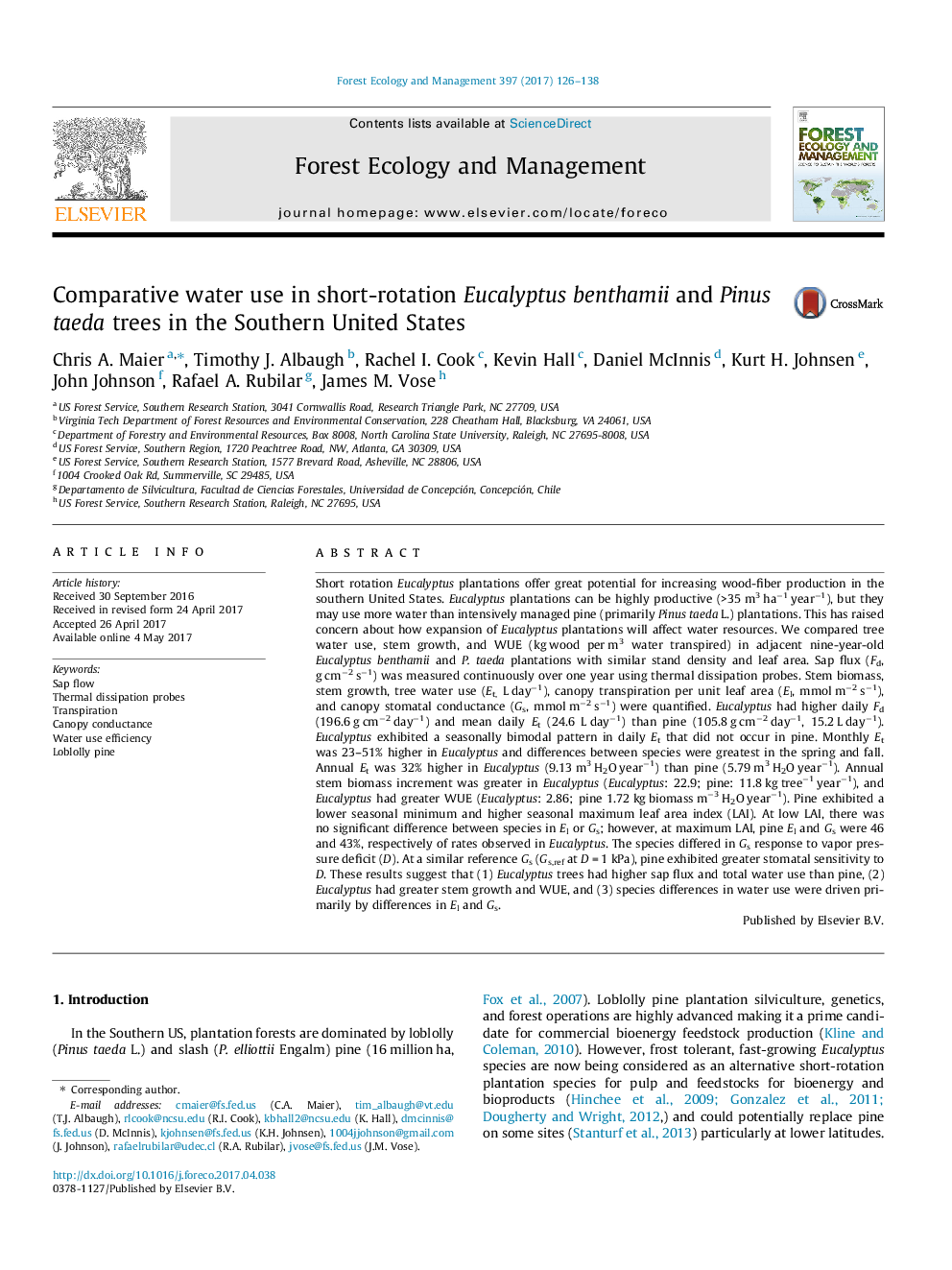| Article ID | Journal | Published Year | Pages | File Type |
|---|---|---|---|---|
| 6459358 | Forest Ecology and Management | 2017 | 13 Pages |
â¢Eucalyptus trees had greater sap flux density and total water use than pine.â¢Eucalyptus trees had greater water use efficiency than pine.â¢Pine canopy conductance was more sensitive to vapor pressure deficit.â¢Leaf level physiology explained species difference in water use.
Short rotation Eucalyptus plantations offer great potential for increasing wood-fiber production in the southern United States. Eucalyptus plantations can be highly productive (>35 m3 haâ1 yearâ1), but they may use more water than intensively managed pine (primarily Pinus taeda L.) plantations. This has raised concern about how expansion of Eucalyptus plantations will affect water resources. We compared tree water use, stem growth, and WUE (kg wood per m3 water transpired) in adjacent nine-year-old Eucalyptus benthamii and P. taeda plantations with similar stand density and leaf area. Sap flux (Fd, g cmâ2 sâ1) was measured continuously over one year using thermal dissipation probes. Stem biomass, stem growth, tree water use (Et, L dayâ1), canopy transpiration per unit leaf area (El, mmol mâ2 sâ1), and canopy stomatal conductance (Gs, mmol mâ2 sâ1) were quantified. Eucalyptus had higher daily Fd (196.6 g cmâ2 dayâ1) and mean daily Et (24.6 L dayâ1) than pine (105.8 g cmâ2 dayâ1, 15.2 L dayâ1). Eucalyptus exhibited a seasonally bimodal pattern in daily Et that did not occur in pine. Monthly Et was 23-51% higher in Eucalyptus and differences between species were greatest in the spring and fall. Annual Et was 32% higher in Eucalyptus (9.13 m3 H2O yearâ1) than pine (5.79 m3 H2O yearâ1). Annual stem biomass increment was greater in Eucalyptus (Eucalyptus: 22.9; pine: 11.8 kg treeâ1 yearâ1), and Eucalyptus had greater WUE (Eucalyptus: 2.86; pine 1.72 kg biomass mâ3 H2O yearâ1). Pine exhibited a lower seasonal minimum and higher seasonal maximum leaf area index (LAI). At low LAI, there was no significant difference between species in El or Gs; however, at maximum LAI, pine El and Gs were 46 and 43%, respectively of rates observed in Eucalyptus. The species differed in Gs response to vapor pressure deficit (D). At a similar reference Gs (Gs,ref at D = 1 kPa), pine exhibited greater stomatal sensitivity to D. These results suggest that (1) Eucalyptus trees had higher sap flux and total water use than pine, (2) Eucalyptus had greater stem growth and WUE, and (3) species differences in water use were driven primarily by differences in El and Gs.
